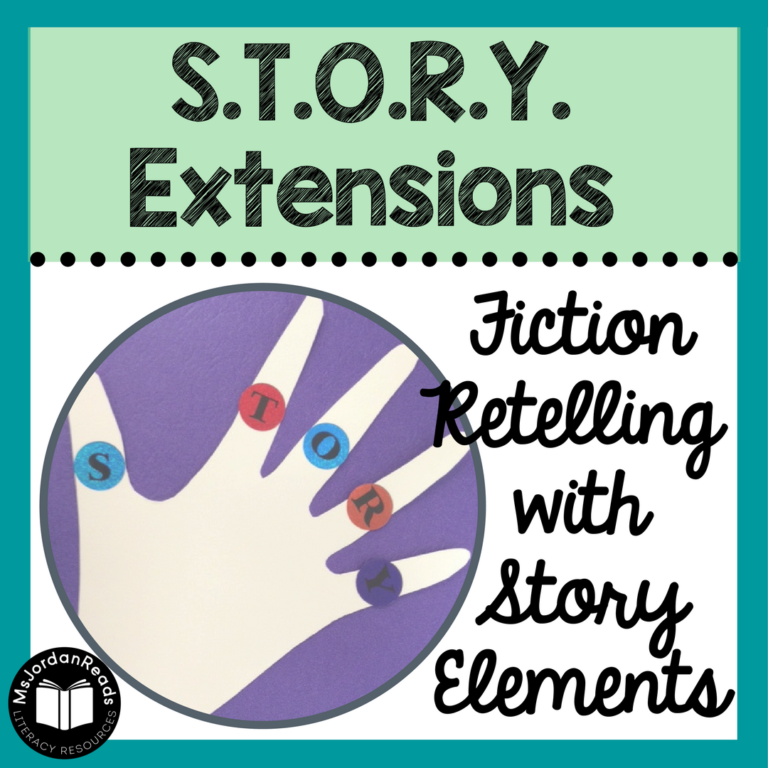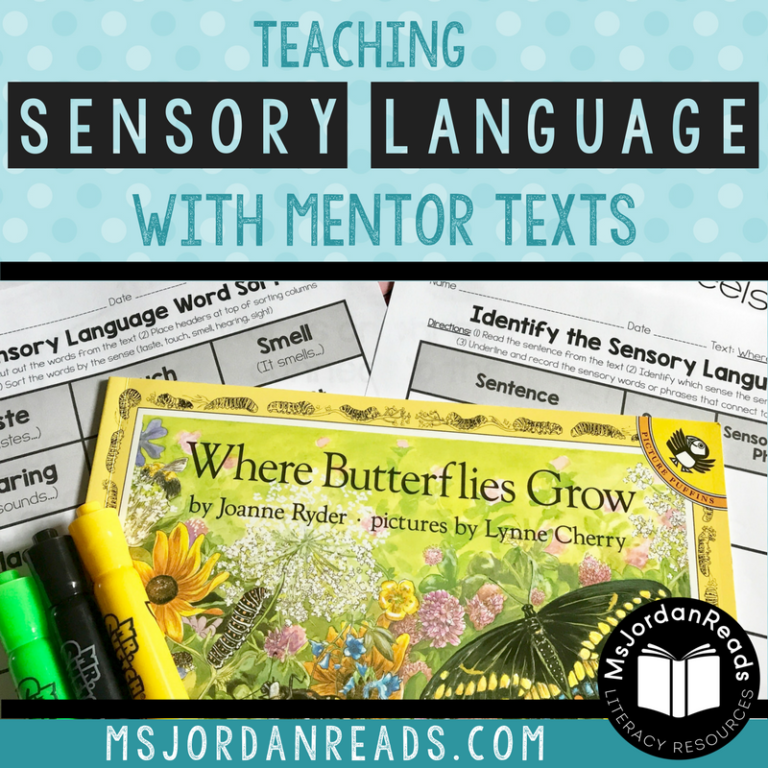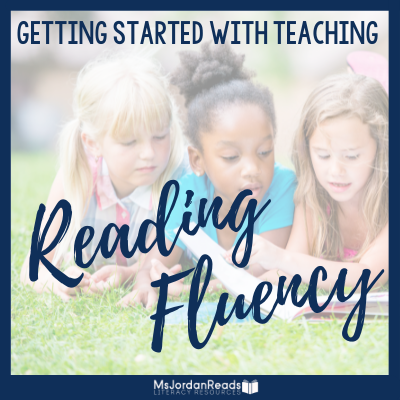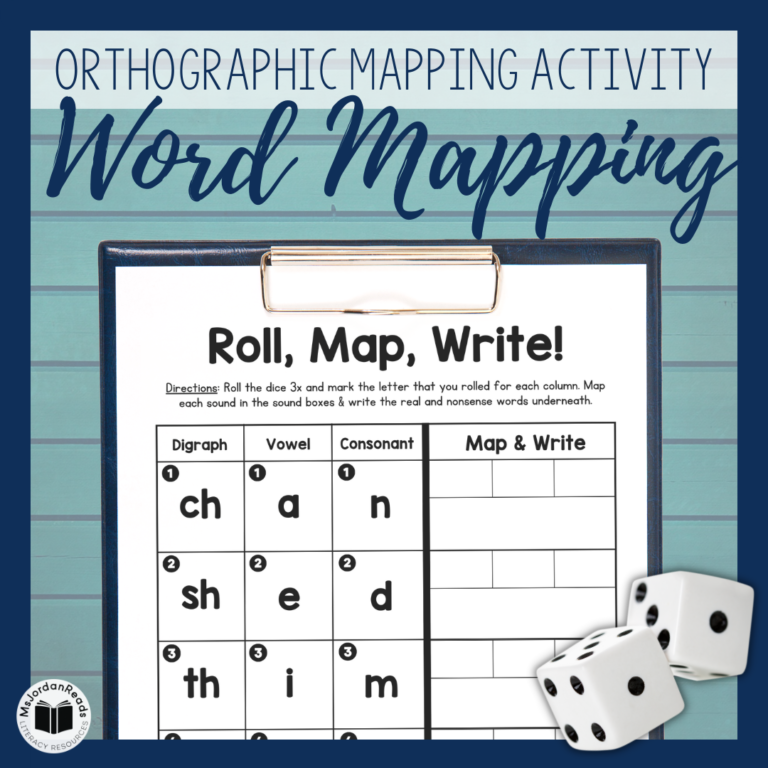Classroom Tips for Implementing Successful Fluency Interventions
Do you have students who struggle with fluency? Do you feel like you don’t have enough time in the day to “fit it all in”? If you’re a classroom teacher or interventionist, I know how precious time can be. Our days are jam-packed and every minute of the day is carved out and accounted for, so it’s more important than ever to make sure your interventions are as effective as they can be. Here are several tips you can implement this year to make sure your fluency interventions lead to the growth and progress you’re looking for!
Review the Parts of Fluency
Before anything else, it’s important to introduce what fluency it is and provide an overview of the main components. Students need to understand pace, phrasing, expression, punctuation, and accuracy so that they can break down each fluency skill and identify their fluency strengths and weaknesses. Download a copy of my free “What is Fluency?” resource to keep in their reading folders and use as a reference throughout the year. (It’s also a great resource to share with parents!)
Introduce Texts Using the “Fluency Five”
When introducing a new text during your fluency interventions, I would recommend using the “Fluency Five” steps. Most beginning readers, especially non-fluent ones, need a strong model of what fluency should sound like and guidance as they navigate new texts. They need the opportunity to practice texts with repetition and a chance to reflect on their own fluency progress.
The “Fluency Five” steps encourage scaffolding and guide students toward reading independently, automatically, and with accuracy. Similar to using the “I Do – We Do – You Do” lesson structure for new skills and concepts, these steps gradually release teacher responsibility as students practice on their own and take ownership of their fluency practice and progress.
- Model Read – Read the text to model what fluency should sound like. Students can make observations or you can point out what you do with your voice and to convey the meaning of the text. You may even wish to model non-fluent reading for them to provide suggestions on how to “fix-up” your fluency.
- Echo Read – Break up the text into smaller chunks and have students repeat after you as you go through each part. This will allow you to model fluency one small section at a time and have students repeat after you, changing their voices to match yours.
- Choral Read – Students will choral read the text out loud with the teacher, a parent, or even a group of students. Reading it and practicing with others can encourage and support students who may not feel ready to try and read by themselves.
- Practice Read – Students practice reading the text independently multiple times. Encourage them to whisper read the text to develop their fluency skills. If you want to make it even more effective, have them record their voices or use a whisper phone so that they can listen to themselves reading the text.
- Performance Read – Have students read the text aloud to a partner or a small audience. If this is not an option, have them record themselves reading their final read-through. This final step allows them to show-off their fluency and motivates them during the practice stage.
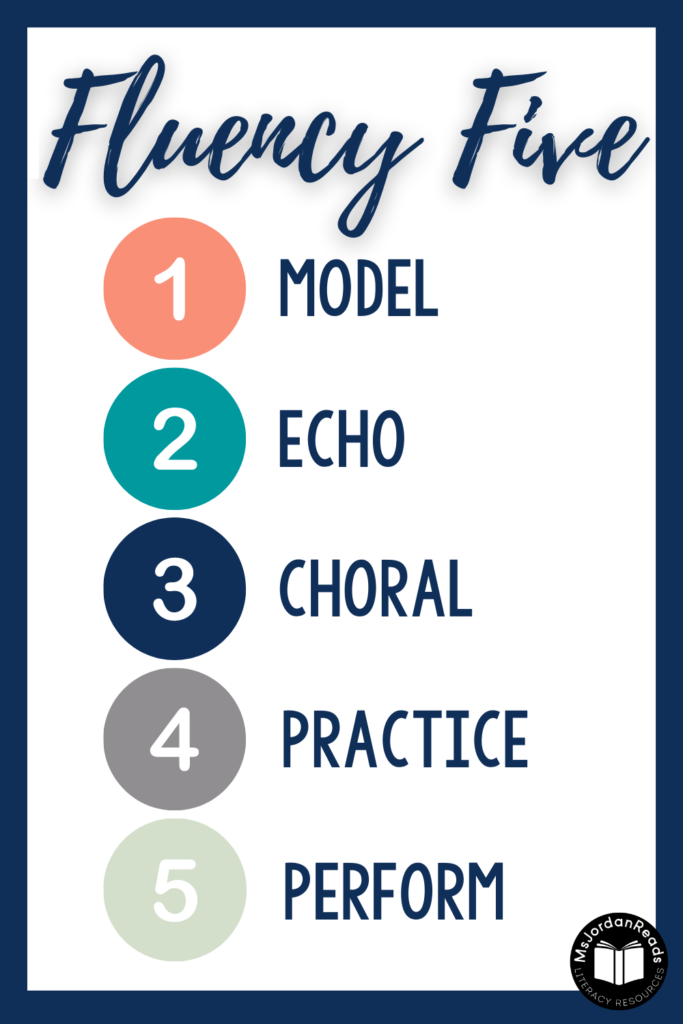
The Fluency Five: Five Steps for Effective Repeated Reading
Use Independent Level Texts
Using independent level texts is important so students are not just focusing on decoding. When students use a text that is on their reading level, focus shifts away from decoding words and more on practicing and learning to read with automaticity and accuracy to support comprehension. There may still be challenging words in the texts, so it’s a good idea to pre-teach any hard words before beginning the intervention so students get stuck or frustrated.
Find Opportunities for Coaching
Another great tip to help implement effective fluency intervention is to find opportunities for coaching. This could look like observing students while they read and sharing anything positive you may notice, while also providing feedback and coaching them on what they could try next time to build their skills. You may need to repeat some steps from the “Fluency Five” such as model or echo reading to encourage students to try again. Eventually, you could even have the students coach each other as they work together in partners.
Encourage Self-Reflection
Provide students with opportunities to listen to their own reading, reflect on their fluency progress, and set goals for themselves. Setting goals helps them set a purpose for their fluency intervention and develops motivation to practice. Students can celebrate their achievements and will develop reading confidence as they start feeling success.
For more information about setting up an effective fluency program in your classroom, check out my Fluency Boot Camp, and be sure to check out my one-stop shop for fluency!


